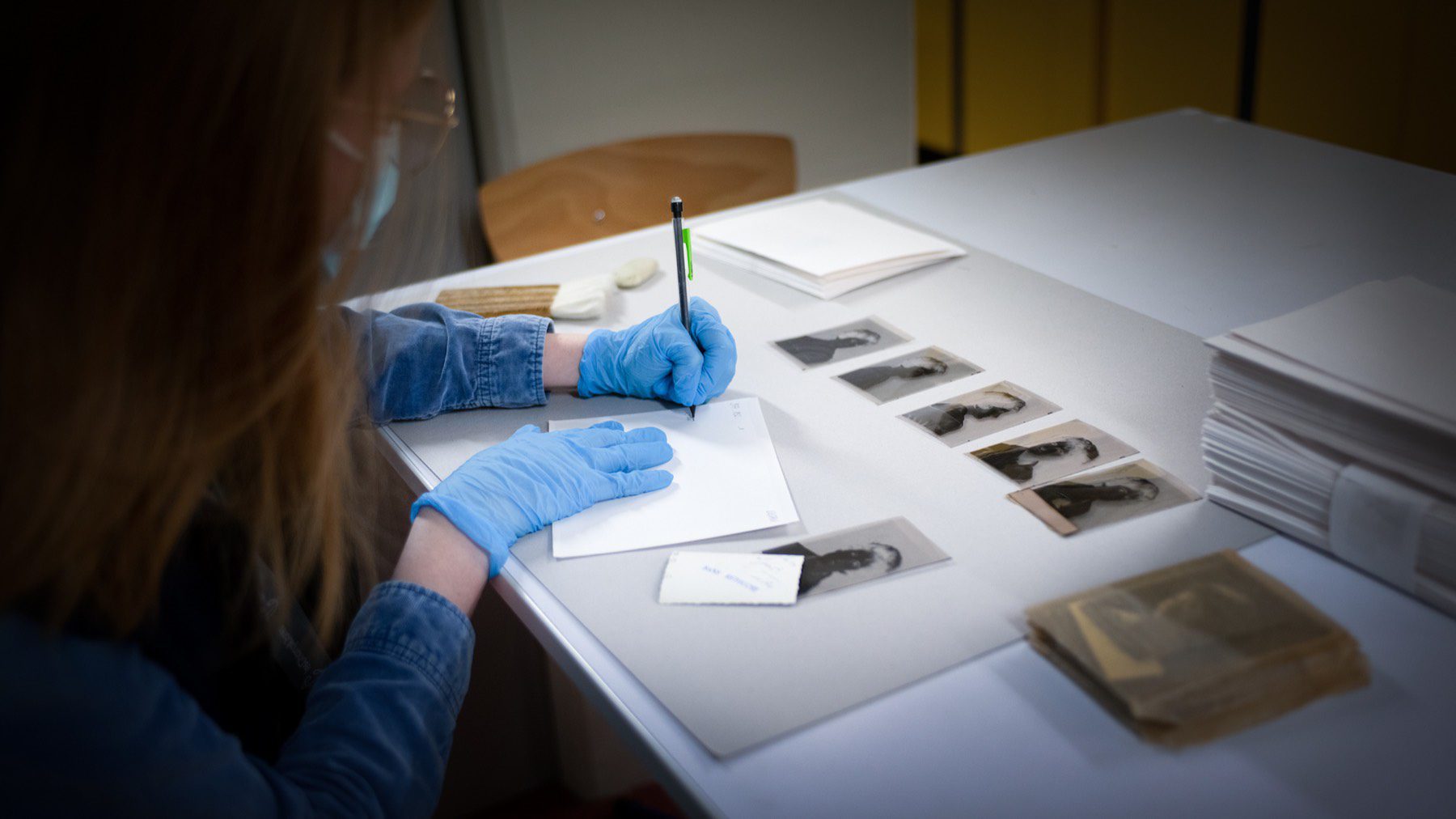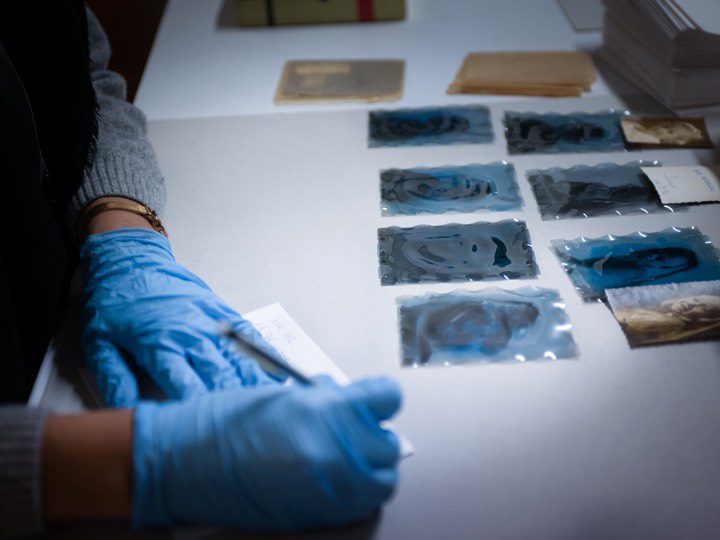Sharing Brittany
Institution
Museum of Brittany
Expertise implemented
Managing heritage assets
Preventive conservation
Background
In 2021, the Museum of Brittany appointed Arkhênum to ensure the sustainability and dissemination of its remarkable heritage. Included in this project are the more than 500,000 items that make up the museum’s photographic collections. These archives consist of negatives and photographs on glass plates and soft media (cellulose nitrate, cellulose acetate), along with slides and paper prints.
Challenges
The oldest photographs date back to the late 19th century. Some are more sensitive to the effects of time than others and require special handling given their fragility. In addition, many are difficult to process and store because they contain cellulose nitrate. Considered a health hazard today, cellulose nitrate is a highly unstable and flammable material prone to unpredictable degradation. It was therefore a priority for the museum to find a specialist who could conserve the collections safely.


Officially inaugurated as the Museum of Rennes in October 1805, the Museum of Brittany was established in the Champs Libres cultural complex, Rennes city centre, in 2006.
Caution! Fragile, toxic and flammable
To work on the photographic collections, Arkhênum put together a team of 4 iconographers and archivists and consulted preventive conservation experts. The team began by meticulously removing dust and reconditioning the collections before sending them to be digitised.
This was followed by the inventory phase, during which each photograph was entered or verified as a record in the museum’s document management tool, Flora. After digitisation, the records, with their accompanying images, were augmented with metadata and indexed for consultation online via the museum’s collections portal, Des Collections en Partage.
The final step in working on these collections
The conservation and digitisation of the photographic collections marks the end a project initiated by the Museum of Brittany in 2016 to inventory and digitise a large number of its collections. It is the second and final part of the large-scale project to be outsourced by the museum following the conservation and digitisation of its graphic arts collections and paper documents.


“We’ve made some very promising discoveries (…) a great step forward for Brittany’s photographic heritage.”
“We needed to outsource this part of the project due to our preventive conservation needs (backing up our photographic collections, especially the negatives on flexible cellulose nitrate) and ten-year inventory obligations (handling a very large volume of items). We also wanted to take advantage of the possibilities offered by our “Des Collections en Partage” online portal since 2017, to digitize our collections and make them as accessible as possible in line with the image rights. The operational chain set up with the support of Arkhênum’s team has allowed us to make significant progress on these three components. We’ve made some very promising discoveries (and rediscoveries): a great step forward for Brittany’s photographic heritage.”
Manon Six, Heritage Curator in charge of the Collections.
The museum’s ambition is to “open a window onto the world to make Brittany shine” as it regularly enriches its portal with new content.
Discover other achievements
Renault
Museum of Brittany
Sharing Brittany
Paul-Émile Victor French Polar Institute (IPEV)
200 years of polar history preserved and shared
Renault
Museum of Brittany
Sharing Brittany
Paul-Émile Victor French Polar Institute (IPEV)
200 years of polar history preserved and shared

